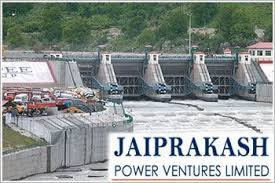
Jaiprakash Power Ventures Ltd (JPVL), a prominent player in India’s power generation and infrastructure sector, has experienced a roller-coaster journey in the stock market. Part of the Jaypee Group, JPVL specializes in thermal, hydroelectric, and cement production, contributing significantly to India’s energy and construction needs. However, the company’s stock market trajectory has been marked by fluctuating investor confidence, financial challenges, and strategic initiatives aimed at revival.
This blog explores the journey of Jaiprakash Power Ventures Ltd in the stock market, analyzing its highs, lows, and efforts to navigate challenges in a competitive industry.
The Inception and Initial Enthusiasm
1. Formation and Early Years
Jaiprakash Power Ventures Ltd was incorporated in 1994 to develop, own, and operate power projects. As a subsidiary of the Jaypee Group, the company benefited from its parent group’s reputation and extensive experience in infrastructure development.
2. Stock Market Debut
JPVL was listed on the stock exchanges in the early 2000s, riding high on India’s burgeoning demand for power and infrastructure. Investor sentiment was optimistic, with shares priced around ₹30, reflecting confidence in the company’s ambitious projects.
3. Expansion and Growth
The company focused on developing hydroelectric and thermal power projects, including the Vishnuprayag Hydroelectric Project and the Nigrie Super Thermal Power Project. These large-scale projects positioned JPVL as a key player in India’s energy sector, attracting investor interest.
The Golden Period: Stock Market Highs
1. Robust Growth in Energy Projects
During the mid-2000s, JPVL saw rapid growth in its operational capacity. The successful commissioning of its flagship hydroelectric and thermal power plants boosted revenue, enhancing investor confidence.
2. Peak Stock Performance
By 2008, JPVL’s stock price soared to over ₹100, marking its peak. This surge was fueled by the company’s expanding project portfolio, favorable government policies, and high demand for energy infrastructure in India.
3. Strong Market Capitalization
At its peak, JPVL’s market capitalization reflected its status as a reliable and growing player in the power sector. The company attracted institutional and retail investors, who viewed it as a solid long-term investment.
Challenges Emerge: Financial Struggles and Stock Decline
1. Increasing Debt Burden
The rapid expansion came at a cost. To fund its large-scale projects, JPVL relied heavily on debt, leading to a mounting financial burden. By the early 2010s, the company’s debt had crossed ₹25,000 crore, raising concerns about its ability to service loans.
2. Delays in Project Execution
Several power projects faced delays due to land acquisition issues, regulatory hurdles, and environmental clearances. These setbacks impacted revenue generation, eroding investor confidence.
3. Sector-Wide Challenges
The Indian power sector faced multiple challenges, including:
- Overcapacity in thermal power.
- Regulatory uncertainties.
- Rising costs of coal imports.
- Payment delays from state electricity boards.
These factors further exacerbated JPVL’s financial woes.
4. Stock Price Plunge
By 2015, JPVL’s stock price had plummeted to below ₹10, reflecting the market’s skepticism about the company’s ability to overcome its challenges. Investors who had bought shares at peak prices faced significant losses.
Efforts Toward Recovery
1. Debt Restructuring Initiatives
To address its debt burden, JPVL undertook various debt restructuring initiatives. The company entered into agreements with lenders to convert a portion of its debt into equity and extended loan repayment timelines.
2. Divestment of Assets
JPVL also adopted an asset-light strategy, selling several power plants to reduce its debt. The sale of the Karcham Wangtoo Hydroelectric Project in Himachal Pradesh and other assets helped generate liquidity.
3. Operational Improvements
The company focused on improving the efficiency of its existing power plants to maximize output and reduce operational costs. These efforts aimed to stabilize revenue and rebuild investor trust.
4. Strategic Focus on Renewable Energy
Recognizing the global shift toward clean energy, JPVL announced plans to explore renewable energy projects. This strategic pivot was intended to align the company with future energy trends and attract sustainable investments.
Recent Developments: Signs of Revival
1. Stabilizing Operations
By 2022, JPVL’s operational performance showed signs of improvement, with better utilization of its power plants. The company’s efforts to streamline operations began yielding results, instilling cautious optimism among investors.
2. Stock Market Recovery
JPVL’s stock price saw a modest recovery, climbing to around ₹8 by mid-2023. While still far from its peak, this upward trend indicated a gradual rebuilding of investor confidence.
3. Government Support for Power Sector
The Indian government’s initiatives to support the power sector, including reforms in coal availability and payment security mechanisms, provided a favorable environment for JPVL’s recovery.
Challenges That Persist
Despite its efforts, JPVL faces significant hurdles:
1. High Debt Levels
The company’s debt remains substantial, limiting its ability to invest in new projects or expand operations.
2. Intense Competition
JPVL operates in a highly competitive market, with established players like NTPC, Tata Power, and Adani Power dominating the sector.
3. Transition to Renewables
While the shift to renewable energy is essential, it requires significant investment. JPVL must balance this transition with its existing financial constraints.
4. Investor Skepticism
Many investors remain cautious, given JPVL’s history of financial instability and stock volatility.
Lessons from JPVL’s Stock Market Journey
The stock market journey of Jaiprakash Power Ventures Ltd offers several key takeaways:
- Prudent Financial Management: Companies must balance growth ambitions with financial sustainability to avoid excessive debt.
- Adaptability: Adapting to market trends, such as the shift to renewable energy, is crucial for long-term success.
- Regulatory Awareness: Navigating regulatory hurdles effectively is vital in sectors like power and infrastructure.
- Investor Communication: Transparent communication with investors helps maintain confidence, even during challenging times.
Future Prospects
JPVL’s future depends on its ability to:
- Reduce Debt: Continued efforts to reduce debt through asset sales and operational efficiencies are essential.
- Invest in Renewables: Diversifying into renewable energy can position JPVL as a forward-looking player in the power sector.
- Enhance Operational Efficiency: Maximizing the output of existing assets can improve profitability and stabilize revenue streams.
- Leverage Government Policies: Taking advantage of favorable government policies and incentives for the power sector can accelerate recovery.
Conclusion
Jaiprakash Power Ventures Ltd’s stock market journey has been a story of highs and lows, reflecting the challenges and opportunities in India’s power sector. From its ambitious beginnings and market highs to financial struggles and gradual recovery, JPVL’s trajectory underscores the importance of adaptability and resilience.
For investors, JPVL represents a potential turnaround story. While risks remain, the company’s efforts to stabilize operations and explore renewable energy hold promise. The road to recovery may be long, but with strategic focus and prudent financial management, JPVL could reclaim its position as a key player in India’s power sector.





